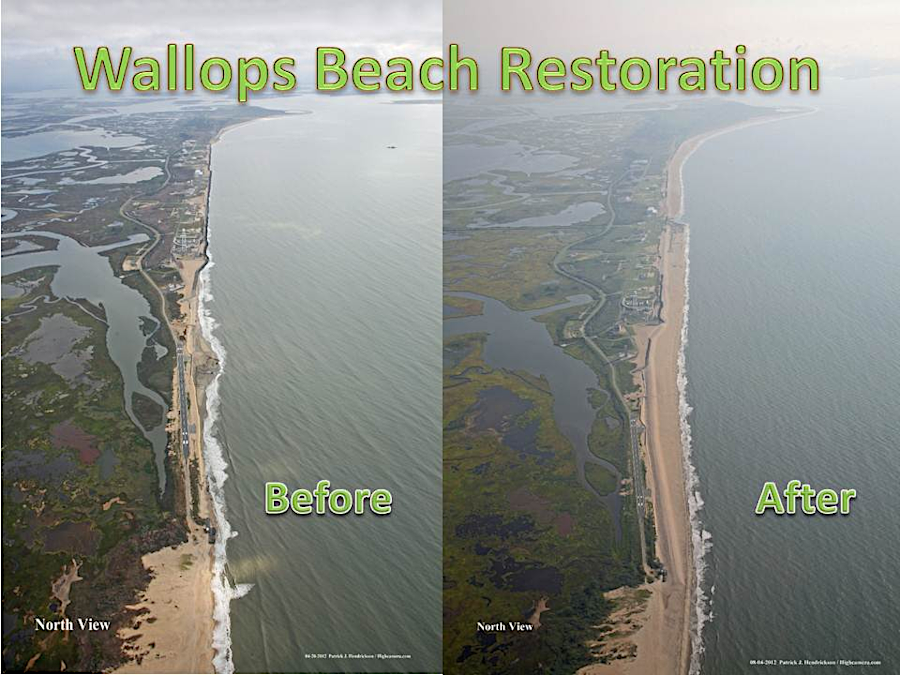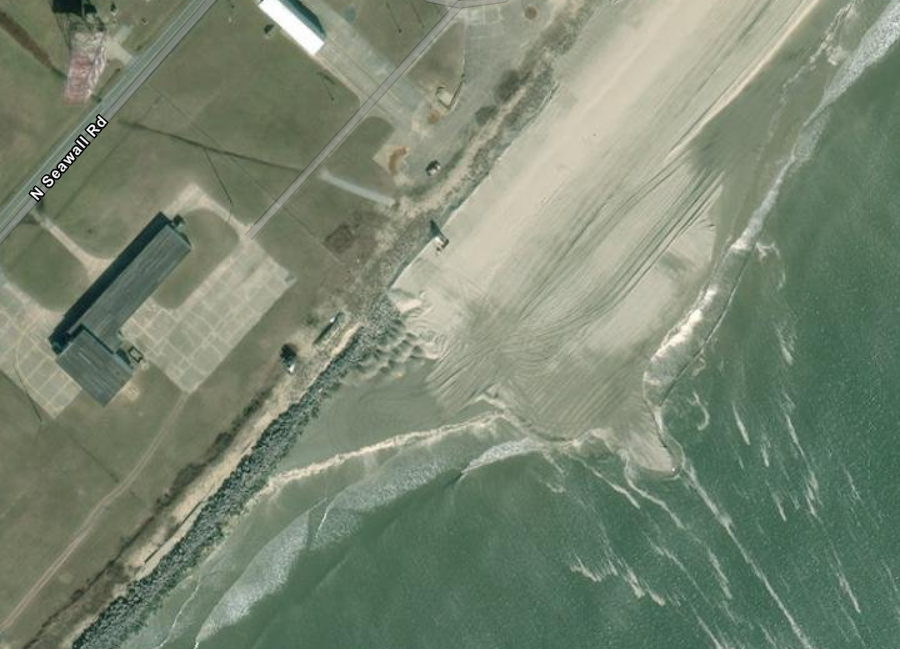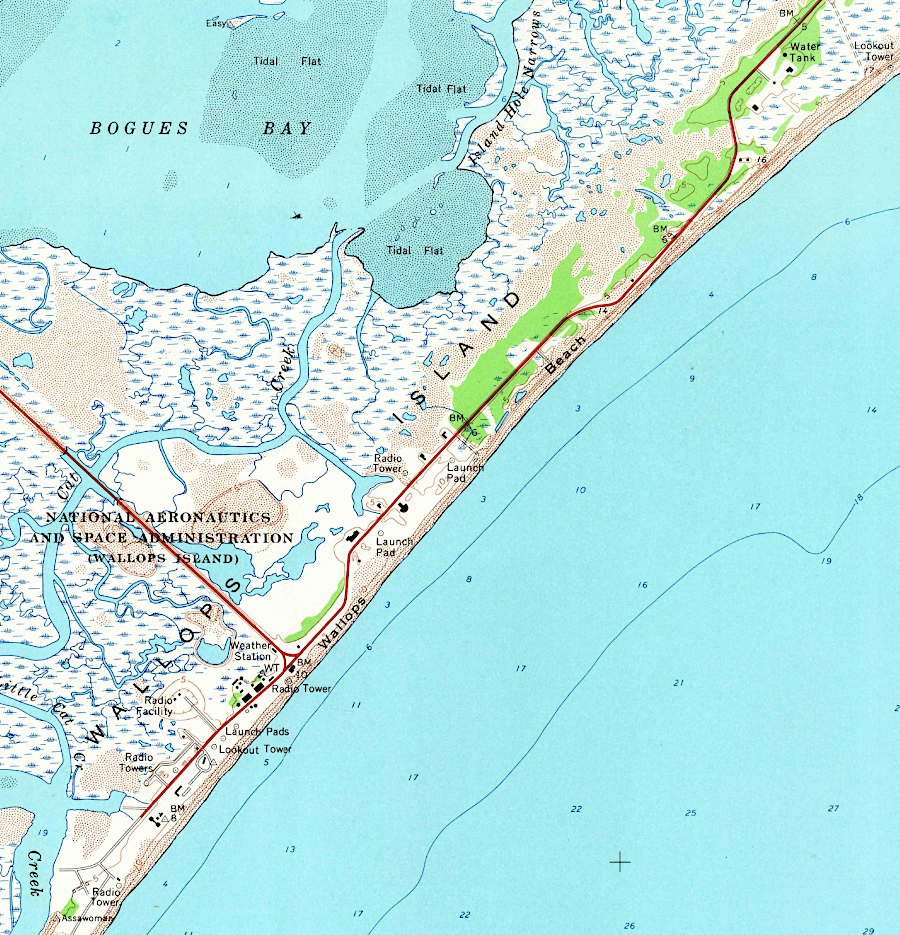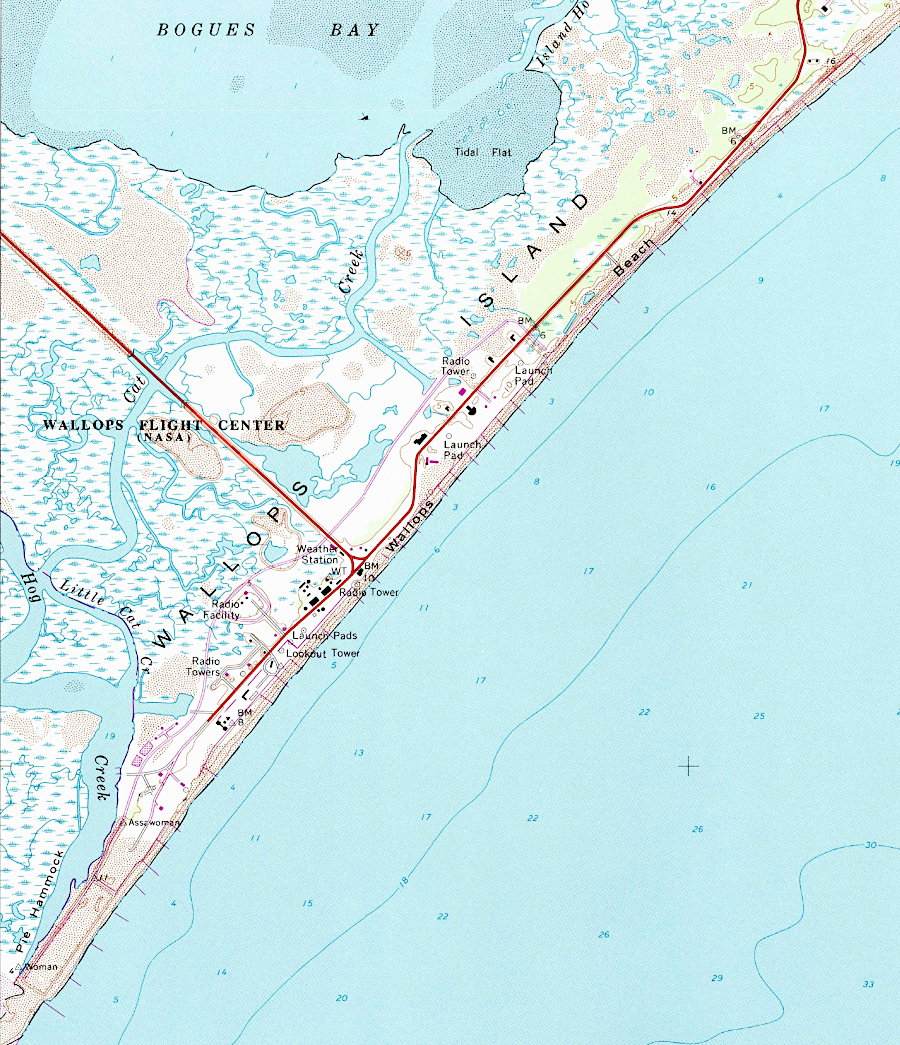
the Wallops Island Storm Damage Reduction project in 2012 was completed just two months before Superstorm Sandy, which eroded 20% of the new beach
Source: National Aeronautics and Space Administration (NASA), Wallops' Newest Beach

the Wallops Island Storm Damage Reduction project in 2012 was completed just two months before Superstorm Sandy, which eroded 20% of the new beach
Source: National Aeronautics and Space Administration (NASA), Wallops' Newest Beach
Regular dredging of the Chincoteague Inlet starves the northern end of Wallops Island from natural sand replenishment. Flight facilities built there, including launch pads at the Mid-Atlantic Regional Spaceport (MARS), are threatened by erosion.
Efforts to stabilize the shoreline in a dynamic beach setting have included construction of jetties, seawalls, and breakwaters, plus sand replenishment projects.
In 2012, a beach replenishment project was completed to protect the spaceport facilities on Wallops Island. The Wallops Island Storm Damage Reduction project built a buffer of sand between the Atlantic Ocean and the rock seawall. The U.S. Army Corps of Engineers anticipated th sand would need to be replenished every 3-7 years. he project was timely; just two months later, Superstorm Sandy eroded away 20% of the beach.1

at Wallops Island, beach replenishment stopped near the southern end where a seawall now provides the only protection
Source: ESRI, ArcGIS Online


jetties were built perpendicular to the shoreline at Wallops Island to protect facilities from beach erosion
Source: US Geological Survey (USGS), Wallops Island 1:24,000 topographic quadrangle (1965) and Wallops Island 1:24,000 topographic quadrangle (1980)